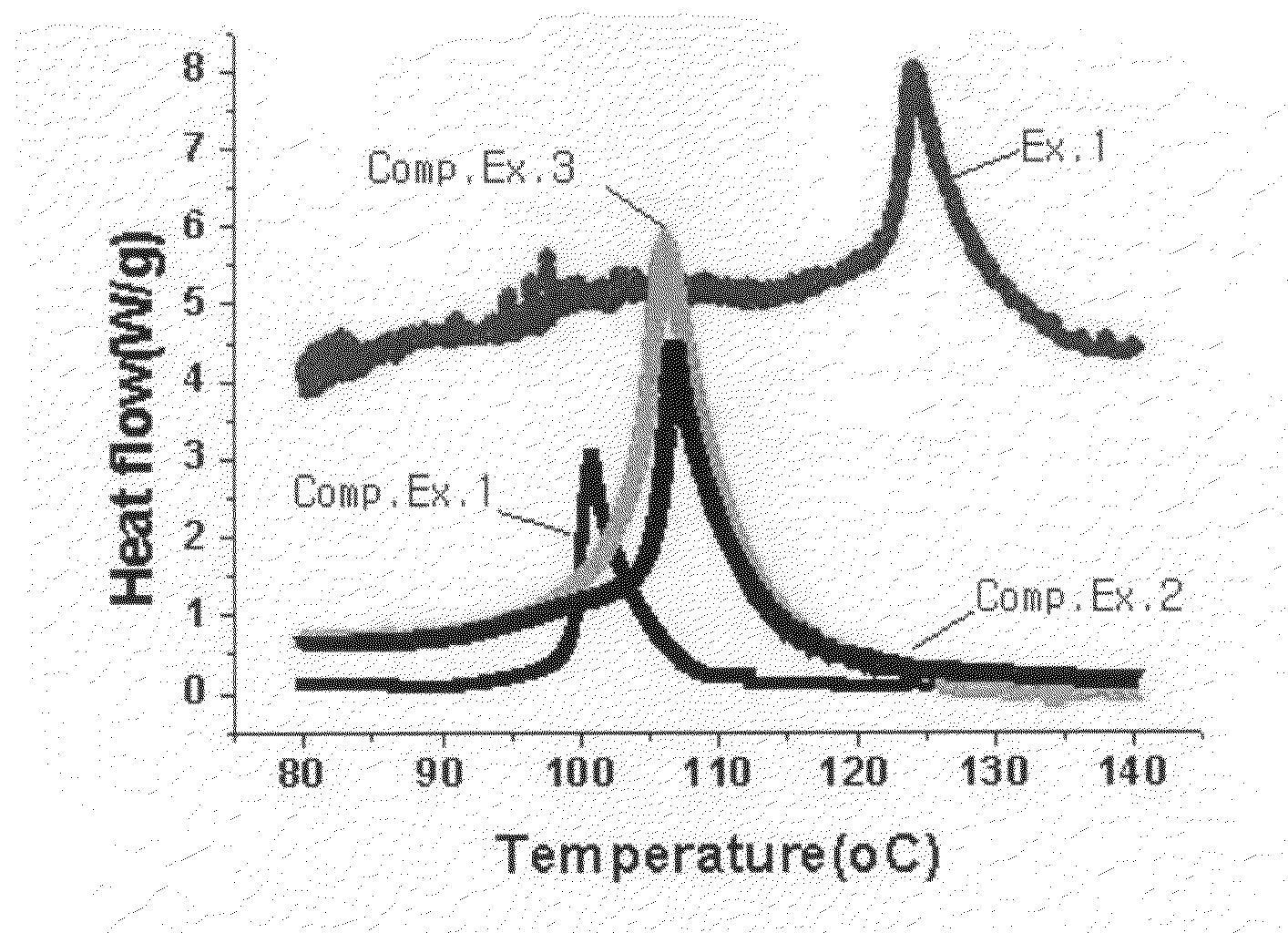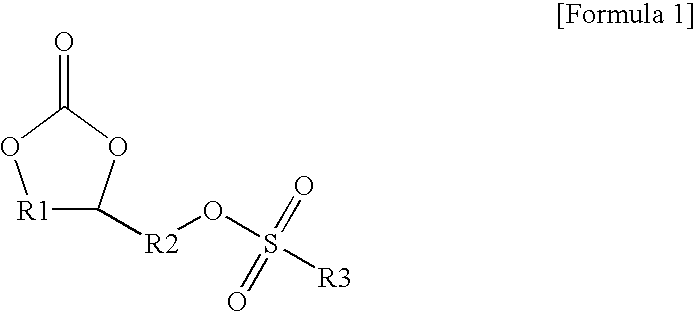Additive for non-aqueous electrolyte and secondary battery using the same
a technology of non-aqueous electrolyte and secondary battery, which is applied in the direction of non-aqueous electrolyte cells, electrochemical generators, organic chemistry, etc., can solve the problems of side reaction inside the battery, structural collapse of the anode, and drop in the capacity of the battery
- Summary
- Abstract
- Description
- Claims
- Application Information
AI Technical Summary
Benefits of technology
Problems solved by technology
Method used
Image
Examples
example 1
Example 1-1
Preparation of 1,3-dioxolan-2-onylmethyl allyl sulfonate
[0045]To 500 mL of acetonitrile (CH3CN), 50 g (0.42 moles) of 4-(hydroxymethyl)-1,3-dioxolan-2-one and 57.5 g (0.42 moles) of allylsulfonyl chloride were introduced under agitation. To the resultant mixture, 58.5 mL (0.42 moles) of triethylamine were gradually added dropwise, and the reaction mixture was agitated at room temperature for 24 hours to perform a reaction (see the following Formula 3).
[0046]After the reaction mixture was diluted with 500 mL of water, the organic layer was extracted with ethyl acetate (EtOAc), and sodium sulfate (Na2SO4) was added thereto to remove the remaining water. Then, the reaction mixture was concentrated in a rotary evaporator and purified by silica gel chromatography.
[0047]After the purification, 75.5 g of 1,3-dioxolan-2-onylmethyl allyl sulfonate was obtained (yield 81′), and the structure was identified by NMR and mass spectroscopy.
[0048]1H NMR (400 MHz, CDCl3): δ 5.85 (m, 1H), ...
example 1-2
Preparation of Electrolyte
[0050]To 100 parts by weight of a solution comprising 1M LiPF6 in a mixed solvent containing ethylene carbonate, propylene carbonate and diethyl carbonate in a volume ratio of 1:1:2, 2 parts by weight of 1,3-dioxolan-2-onylmethyl allyl sulfonate obtained as described in Example 1-1 was added to provide an electrolyte.
example 1-3
Manufacture of Battery
[0051]First, 93 parts by weight of an graphitized carbon active material and 7 parts by weight of polyvinylidene difluoride (PVDF) were introduced into N-methyl-2-pyrrolidone as a solvent, and the mixture was further mixed for 2 hours in a mixer. Then, the resultant slurry was coated onto a copper foil collector, followed by drying at 13° C., to provide an anode. Next, 91 parts by weight of LiCoO2, 3 parts by weight of PVDF and 6 parts by weight of conductive carbon were mixed in N-methyl-2-pyrrolidone as a solvent for 2 hours by using a mixer. Then, the resultant slurry was coated onto an aluminum foil collector, followed by drying at 130° C., to provide a cathode. The cathode was cut into a circular shape and introduced into a coin-like can. A separator (celgard 2400) was stacked thereon and an anode cut into a circular shape was further stacked thereon. The resultant assembly was impregnated sufficiently with the electrolyte obtained as described in Example ...
PUM
| Property | Measurement | Unit |
|---|---|---|
| Percent by mass | aaaaa | aaaaa |
| Fraction | aaaaa | aaaaa |
| Fraction | aaaaa | aaaaa |
Abstract
Description
Claims
Application Information
 Login to View More
Login to View More - R&D
- Intellectual Property
- Life Sciences
- Materials
- Tech Scout
- Unparalleled Data Quality
- Higher Quality Content
- 60% Fewer Hallucinations
Browse by: Latest US Patents, China's latest patents, Technical Efficacy Thesaurus, Application Domain, Technology Topic, Popular Technical Reports.
© 2025 PatSnap. All rights reserved.Legal|Privacy policy|Modern Slavery Act Transparency Statement|Sitemap|About US| Contact US: help@patsnap.com



